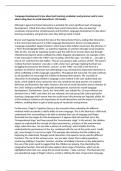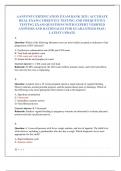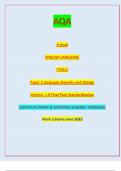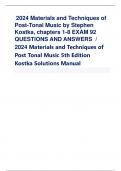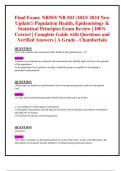Exam (elaborations)
AQA A-level English Language: Child Language Acqusition - ‘Language development is less about just learning vocabulary and grammar and is more about using them in social interactions’. (30 marks).
- Module
- Child Language Acquisition
- Institution
- AQA
‘Language development is less about just learning vocabulary and grammar and is more about using them in social interactions’. (30 marks). I scored 26 out of 30 on this essay which was an A*.
[Show more]
